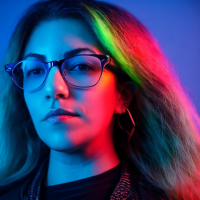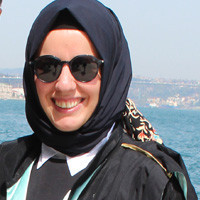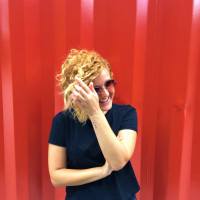Research Article
Aim & Scope
Bodrum Journal of Art and Design, which is the Journal of Muğla Sıtkı Koçman University Bodrum Faculty of Fine Arts, is an international refereed journal. The journal aims to evaluate the fields of art and design and original interdisciplinary studies made in these fields in accordance with academic and scientific ethical rules and to deliver them to the reader. The journal publishes two issues a year (February-August), and the publication languages are Turkish and English.
Bodrum Journal of Art and Design publishes original research and review articles that contain basic field studies in all arts and design fields and interdisciplinary work in sub-fields related to these fields. Submitted articles should not be under review in any other journal or should not be submitted simultaneously to any other journal.
Author Guidelines
The article should be written in A4 size, Times New Roman font, 11 points, 1-spaced (single-spaced / 6nk spacing) and justified (block). The article should be prepared with a maximum of 25 pages, including the abstract and references, in accordance with the attached paper template. Author information should not be added to the article. In addition, title page with the title of the article and information about the author (title of the article, names of the author/authors, ORCID number of the authors, academic titles, institution, faculty, department) should be prepared. Copyright Agreement Form should be signed by the corresponding author, if there is a title change during the evaluation process, the form should be sent again. If the uploaded text has been presented as a paper or derived from a graduate thesis, a footnote should be added in the title.
Preparation of the article in the Microsoft Office Word program is recommended for compatibility. The prepared text should not be sent as a PDF, it should be sent as .doc or .docx, which are extensions of Microsoft Office Word files.
Page margins should be adjusted as follows; right side 2.5, left side 2.5, top 3 cm, bottom 3 cm.
The main title should be written at the top of the page, centered and in 12-point capital letters. All headings should be left-aligned. The titles at 3 different levels that can be used in the article should be arranged according to the 3 rules below.
First level titles; should be left-aligned, bold, and all capital letters.
Second level titles; should be left-aligned, bold, and the first letter of each word should be capitalized.
Third level titles; should be left-aligned, bold and only the first letter of the first word should be capitalized.
One-line space is left before the subtitles.
It is recommended that the title should not be too long and should cover the subject.
The abstract should consist of minimum 150 and maximum 200 words and should be written in 9 points. The abstract should include the purpose, scope, method and result information. In the abstract, equations, citations, abbreviations, examples, etc. should not be included.
“Keywords” consisting of at least 3 and maximum 5 words should be added under the abstract text; the first letter of each keyword should be capitalized and keywords should be separated by commas.
The footnote should appear in the text on the corresponding page. It should be written in single line spacing, in 8 points, 1-spaced (with single line spacing / 0nk spacing and justified (block).
The structure of the article should be created as; the Introduction, Headings (determined according to the subject) and Conclusion. (Subtitles can be inserted in main titles when necessary). Images and Tables should be added to the section related to the text and numbered consecutively (10 points, 1 space, centered). Links to images should be added sequentially (with access date) by creating a Visual References title after References. Pictures, photographs, graphics, drawings, etc. desired to be used in the article, must be in JPEG or TIFF format with 300 dpi resolution and must be sent separately. Contents like tables, graphs, etc. should be sent as editable (Excel or Word files) not as pinned images.
The imprint information for the artwork should be as follows.
Image number (bold). Artist name, Artwork name (italic), Date, Technique/Material, Size, Exhibited/Found place
Image X. Pablo Picasso, Guernica, 1937, Oil on canvas, 349 x 776 cm, Reina Sofía Museum, Madrid
References to other works in the text should be made using The American Psychological Association (APA 7) system.
In-text references should include the author's surname, year and page number in parentheses. Example: (Surname, 2019: 10).
If the source has two authors, it should be written with "&". Example: (Surname1 & Surname2, 2019: 10).
If the reference has 3 or more authors, the surname of the first author is written and “et al.” is used. Example: (Surname et al., 2019: 10).
If there is no possibility to reach the first source, it should be stated through the second source. Example: (Surname cited by primary source Surname, 2019: 10).
If the same author(s) has more than one source published in the same year, the names of the studies should be listed alphabetically and the order should be made by adding letters such as “a, b, c, d” respectively to the publication date in parentheses. Example: (Surname, 2019a: 10) (Surname, 2020b: 11).
Direct quotations longer than 3 lines should be written in 10-point, single-spaced and indented.
References should be written in accordance with the APA 7 Style.
Books, articles, and theses that have been accessed from the Internet even though they are in print, are cited in the "References" in the same way as the presentation of printed publications.
Article: Surname, N. (2019). The name of the article. Journal Name, Volume(Issue), 23-36. doi:
Book: Surname, N. (2019). The name of the book. Publisher.
e-Book: Surname, N. (2019). The name of the book. Publisher. URL
Thesis: Surname, N. (2019). The name of the thesis [PhD/DA/Master's Thesis, Name of the University].
Web Page: Surname, N. (2021). Name of web page. Name of Web Site. URL (dd/mm/yy).
Sources such as TV shows, TV series, movies, music and sound recordings, or multimedia software are cited in “References”.
Motion Picture: Surname, N. (Producer) and Surname. A. (Director). (2019). The name of the movie. [Film]. Country: Name of the producer company.
Theater Screening: Surname, N. (Director). (2021, October 10). The name of the play [Author Name and Surname]. The place where the show took place.
Social Media: Surname, N. (2019, 15 November). Note and hashtag of the shared image [Photo]. The name of the social media resource. URL and date accessed.
Digital Game: Name of the game (Game version eg PC) [Game Type eg. video game]. (2019). Publishing company.
Ethical Principles and Publication Policy
Publication Policy
The first evaluation of the studies submitted to the journal is reviewed by the editor in terms of compliance with the subject and journal principles. The editorial board secretary makes technical preliminary evaluations by checking the compliance of the article in line with the writing rules and publication principles of the journal. If the study is suitable for the journal, it is directed to the field editor. The field editor evaluates the studies in terms of compliance with the journal criteria, language and scientific quality, and notifies the editor of any necessary corrections. After the corrections are completed, the referee process of the study begins. Referees have the right to give corrections more than once and to see again after correction. The referee decisions and the final version of the study are notified to the editor, and the editorial board decides whether the article will be published or not according to the evaluations of the referees. Blind refereeing system is applied in our journal.
Publication Ethics and Malpractice Statement
Bodrum Journal of Art and Design applies scientific publication ethics to the highest standards and considers the recommendations and guidelines developed by COPE (Committee on Publication Ethics). Manuscripts submitted to the journal go through a double-blind peer-review process by being reviewed by an editor and at least two reviewers. Article submitted for publication should not be published elsewhere or waiting in line for publication.
Author’s Responsibilities
Authors should provide an accurate description of the work done and an objective discussion of its significance. An article should contain the necessary details and references to allow citation.
Authors should ensure that the submitted work is original, and if authors have used other works, it should be properly cited. All sources used in the study should be specified. Plagiarism constitutes any unethical publishing behavior and is unacceptable.
Authors may be required to provide raw data in connection with an article for editorial review, and data must be stored for a reasonable period of time after publication.
The submitted article should not be published elsewhere or waiting in line for publication. Submitting the same study to more than one journal at the same time is considered unethical behavior.
Authorship should be limited to those who have made significant contributions to the work. All contributors must be listed as co-authors. The corresponding author ensures that all contributing authors are included in the author list.
All manuscripts must contain a statement explaining financial or other financial conflicts of interest that could be interpreted to affect their results or interpretation. All sources of financial support for the project should be disclosed.
Reviewer’s Responsibilities
The reviewers assist the editor and the editorial board in the evaluation process, editorial decisions.
Any selected reviewer who is not qualified to review the research or is written in a paper or knows that immediate review will be impossible should notify the editor and not be involved in the review process.
Reviewers should keep the information or ideas obtained in the evaluation confidential.
Reviewers should not have any conflict of interest. Unpublished material described in a submitted article may not be used in reviewers' research.
The reviewers evaluate the articles irrespective of their race, gender, sexual orientation, religious belief, ethnic origin, citizenship or political philosophies. Evaluations should be done objectively. Referees should express their opinions with supporting documents.
Reviewers should identify cases where the published work cited in the article is not cited in the reference section. It is obliged to report any significant similarity or overlap with previously published articles.
Editor Responsibilities
Editor's responsibility is to decide which articles will be published in the journal. The editor evaluates the articles irrespective of race, gender, sexual orientation, religious belief, citizenship or political philosophies. The decision to be taken should be based on the accuracy, validity and importance of the article and the appropriateness of the scope of the journal. Current legal requirements regarding libel, copyright infringement, and plagiarism should also be considered.
Editors ensure that all information about the submitted manuscript is kept confidential until it is published. Authors should not allow any conflict of interest or competition between editors and reviewers.
Unpublished material described in a submitted article may not be used in editors' research.
Open Access Policy
Bodrum Journal of Art and Design has adopted the publishing standards and policy set by DOAJ (Directory of Open Access Journals) and it is an Open Access Journal. Open Access (OA) provides freely access the articles that published in the journal.
The definiton of "Open Access" according to Budapest Open Access Initiative (BOAI) which is: "it is free availability on the public internet, permitting any users to read, download, copy, distribute, print, search, or link to the full texts of these articles, crawl them for indexing, pass them as data to software, or use them for any other lawful purpose, without financial, legal, or technical barriers other than those inseparable from gaining access to the internet itself."
Copyright Policy
The author/authors are deemed to have accepted to transfer the publication and copyright of their articles to our journal and not to request any fees. Copyright Agreement Form should be sent by the corresponding author. All published articles are open to everyone on the condition that the journal and authors are referenced.
Plagiarism Scan
All articles submitted for publication are scanned with iThenticate (Plagiarism Detection Software). More than 20% is not accepted for publication.
Research and Publication Ethics
For studies conducted since 2020, ethics committee approval should be obtained for studies that require ethics committee approval, and this approval should be stated and documented in the article. In studies that require ethics committee permission, information about the permission (name of the committee, date and number) should be included in the method section and also on the first/last pages of the article. Studies that require the approval of the Ethics Committee are as follows:
All kinds of research conducted with qualitative or quantitative approaches that require data collection from the participants by using survey, interview, focus group work, observation, experiment, interview techniques.
The use of humans and animals (including material/data) for experimental or other scientific purposes,
Clinical studies on humans,
Research on animals,
Retrospective studies in accordance with the personal data protection law.
Price Policy
Bodrum Journal of Art and Design does not charge article submission charges (ASCs), and article processing charges (APCs).
Indexes
Citation Indexes
Other Indexes
Journal Boards
Editor in Chief

Assistant Editors






Section Editors
Doç. Ayşe Karabey Tekin lisans eğitimini Sivas Cumhuriyet Üniversitesi Güzel Sanatlar Fakültesi Heykel Bölümü’nde, yüksek lisansını Gazi Üniversitesi Güzel Sanatlar Enstitüsü Bileşik Sanatlar Ana Sanat Dalı’nda “Çocuk Masallarının İzdüşümü ”başlıklı teziyle tamamlamıştır. Sanatta Yeterliliğini ise Gazi Üniversitesi Güzel Sanatlar Enstitüsü Heykel Ana Sanat Dalı’nda “Güncel Sanatta Bir Kültürel Bellek Olarak Terkedilmiş Alan” başlıklı tezi ile tamamlamıştır. Şu an Sivas Cumhuriyet Üniversitesi Mimarlık Güzel Sanatlar ve Tasarım Fakültesinde Doçent olarak görev yapmaktadır.


Tuba (Korkmaz) Batu,1980 yılında Diyarbakır’da doğmuş bir Çanakkaleli.
Sanat eğitimi on dört yaşındayken Eskişehir Anadolu Güzel Sanatlar Lisesi Resim Bölümü’nde, seramik yolculuğu ise lisans eğitimi ile birlikte Anadolu Üniversitesi Güzel Sanatlar Fakültesi’nde 1998 yılında Seramik Bölümü’nü kazanmasıyla başladı.
Yüksek Lisans derecesini yine aynı üniversiteden 2006 yılında yazdığı ‘Günümüz Seramik Sanatında Kadın Figürlerinin Araştırılması’ başlıklı teziyle aldı. Plastik sanatlarda figüre karşı ilgisi bu çalışmasıyla daha da perçinlendi. Bu arada Çanakkale’de kurduğu kişisel atölyesinde birçok mekân için büyük boyutlu mimari panolar tasarladı, uyguladı.
2010 yılında seramik endüstrisinde tasarımcı olarak çalışmaya başladı. Bu esnada Marmara Üniversitesi’nde Sanatta Yeterlik eğitimine devam etti. 2016 yılında Kimlik-Bellek: ‘İstedim ki Bilineyim!’ başlıklı eser metniyle Doktora derecesini aldı, tezi ‘İstedim ki Bilineyim!’ ismiyle kitap olarak yayınlandı. Aynı yıl tasarımcı ve yönetici olarak yıllarca çalıştığı seramik endüstrisini bırakma kararı aldı.
2018 yılından beri kariyerine akademisyen olarak devam etmektedir. Çanakkale Onsekiz Mart Üniversitesi El Sanatları Bölümü’nde doçent ve bölüm başkanıdır.
Bugüne kadar dokuz kişisel sergisi olan sanatçı yurt içinde ve yurt dışında pek çok sergi, sempozyum ve etkinliğe katıldı.
Eserleri ve seramik panoları birçok özel ve kamu koleksiyonlarında yer almaktadır.






Foreign Language Editors


Layout Editor

Proofreading


 Web
Web








